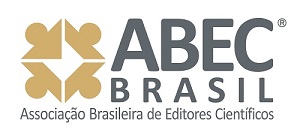POLYPHONY IN THE NOVEL LA REGIÓN MÁS TRANSPARENTE (2008), BY CARLOS FUENTES
Keywords:
Novel, Polyphony, La región más transparenteAbstract
The main goal of this paper is to investigate the use of the concept of polyphonic romance proposed by the language philosopher Mikhail Bakhtin (1993; 2000) in the novel La región más transparente (2008) from the Mexican Carlos Fuentes. The polyphony will be analyzed in its three features: the stylistic pluri, the plurilinguism and the plurivocal. Related to the Mexican"™s novel narrative structure, the main theoretical basis will be Josef (1993) and Oviedo (2002). Besides of these, it will be used different research sources, as the Diccionario de la Real Academia Epañola (DRAE) and the Diccionario del Español del México (DEM) from Colegio de México. It is implied that, in La región más transparente, there is a great polyphonic work, because there are different voices from the characters through their linguistic characteristics and their social position, what will be gathered with the different discursive genres present in the novel.
Downloads
References
______. ______. 3.ed. São Paulo: Editora UNESP, 1993.
______. O romance polifônico de Dostoiéski e seu enfoque na crítica literária. In:
______. Problemas da poética de Dostoiévski. Tradução: Paulo Bezerra.5ed. Rio de Janeiro: Forense Universitária, 2010. p. 3-51
BARBOSA, Carlos Alberto Sampaio. A Revolução Mexicana. São Paulo: Editora UNESP, 2010. Revoluções do século XX.
BRAIT, Beth. A personagem. 5.ed.São Paulo: Ática, 1993. Série Princípios.
COLEGIO DE MÉXICO A. C. Diccionario del Español de México (DEM). Disponível em: <http://dem.colmex.mx/Default.aspx> Acesso em: 14 abr. 2014.
COLINA MARÍN, Egly. Biografía de Alfonso Sparza Oteo. Disponível em:<http://www.fundacionjoseguillermocarrillo.com/sitio/muspopular_alfonso_esparza_ot eo.php> Acesso em 15 abr. 2014.
DONOSO, José. Historia personal del "Boom". Santiago: Andres Bello, 1987.
FUENTES, Carlos. La región más transparente. Buenos Aires: Aguilar, Altea. Taurus, Alfaguara, 2008a.
______. _______. Madrid: Alfaguara, 2008b. Edición conmemorativa.
______. La nueva novela hispanoamericana. Ciudad de México: Joaquín Mortiz. 1976.
GALEANO, Eduardo. Los nadies. In: ______. El libro de los abrazos. Montevideo: Catálogos, 1989.
GÓMEZ MÉNDEZ, Sérgio Orlando. et al. Entrevista Díaz-Creelman (1908). In: ______. Historia de México. México: Limusa, 2005. p.225-22.
JOZEF, Bella. O espaço reconquistado: linguagem e criação no romance hispanoamericano. 2.ed.Rio de Janeiro: Paz e Terra, 1993.
LA CUCARACHA – Canción tradicional. Disponível em: <http://www.mamalisa.com/?t=ss&p=3230&c=71> Acesso em: 24 abr. 2014.
LA CUCARACHA. Disponível em:< http://www.veintemundos.com/magazines/14- en/cancionero/> Acesso em 24 abr. 2014.
MOISÉS, Massaud. Dicionário de termos literários. 12.ed. São Paulo: Cultrix, 2004.
OVIEDO, José Miguel. Carlos Fuentes en la Edad del tempo. In: Historia de la literatura hispanoamericana. – 4. De Borges al presente. Madrid: Alianza Editorial S.A., 2002. p. 315-329.
REAL ACADEMIA ESPAÑOLA. Diccionario de la Lengua Española. Disponível em: <http://lema.rae.es/drae/> Acesso em: 14 abr. 2014.
Downloads
Published
How to Cite
Issue
Section
License
Copyright (c) 2015 Elis Regina Basso, Ximena Antonia Díaz Merino

This work is licensed under a Creative Commons Attribution-NonCommercial-ShareAlike 4.0 International License.






